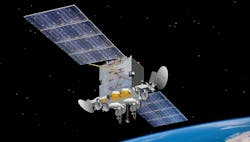U.S., China, and Russia push race to build and deploy space-based hypersonic missile defense and sensors
HONG KONG – China, Russia and the United States are all revisiting space-based missile defense and anti-satellite weaponry concepts to counter rapidly developing and proliferating hypersonic missiles, a great power contest that promises to accelerate the militarization of outer space. Asia Times reports. Continue reading original article
The Military & Aerospace Electronics take:
21 Feb. 2022 -- Space-based missile defenses and sensors add another layer to existing anti-missile defenses and would most likely focus on intercepting missiles during the early stages of their powered boost flight phase. This increases the chance of successful intercepts compared to mid-course and terminal intercepts where missiles could perform evasive maneuvers at hypersonic speeds.
Space-based defenses could target satellites that are critical links in hypersonic weapons’ so-called kill chain, which are all the necessary things, people and processes involved in launching missiles and guiding them to their targets.
Armed satellites can also attack enemy satellites in several ways, including through physical attacks, directed energy or conventional weapons, electronic warfare, chemical sprays or even direct collision.
John Keller, chief editor
Military & Aerospace Electronics
